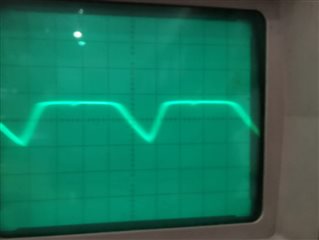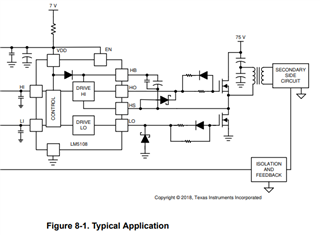Other Parts Discussed in Thread: LM5176, , LM2105, CSD19502Q5B, LM5108
One question regarding the thread of Tyhran with the same title from about 3 months ago;
Would the circuit shown thre really work? Although there was no negative comment on that topic I wonder whether the connection of SW1 and SW2 (and Boost1/2, too) to GND (to VCC) instead of to the switching nodes would work. We built up a respective prototype after this circuit and there was no output switching signal from the IC. There is no deeper explanation about the functions of SW1,2 and Boost1,2 in the datasheet, so we would really need the feedback of a TI expert.




